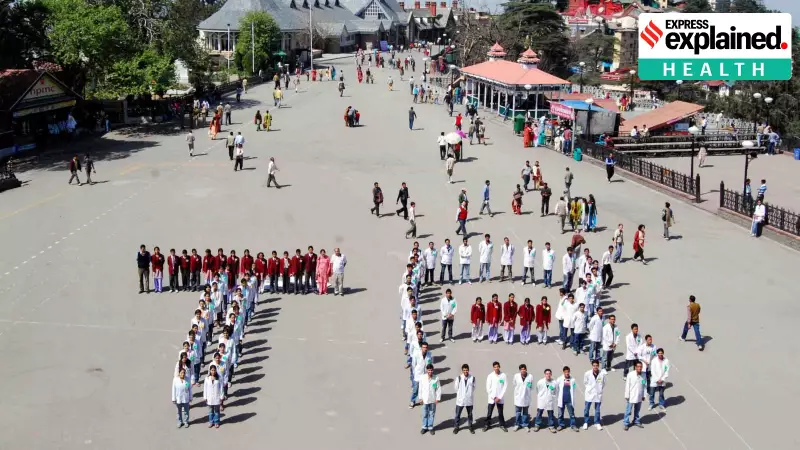
India's ambitious goal to eliminate tuberculosis by 2025 appears increasingly unattainable, according to the latest Global TB Report 2025. Despite making significant strides in diagnosis and treatment, the country continues to bear the world's highest tuberculosis burden with approximately 27.1 lakh cases and over three lakh deaths recorded in 2024.
Progress Amidst Persistent Challenges
The report reveals a complex picture of India's fight against TB. On one hand, the country achieved its highest-ever diagnosis rate, identifying 26.18 lakh cases in 2024 and narrowing the gap between estimated and actual diagnosed cases to just around one lakh "mission cases." This achievement placed India among eight high-burden nations that successfully diagnosed more than 80% of estimated cases.
However, this progress remains insufficient to meet the elimination target announced by Prime Minister Narendra Modi in 2018. The data shows India has managed only a 21% reduction in new cases and a 28% reduction in deaths between 2015 and 2024. These figures fall significantly short of the END TB milestones for 2025, which require a 50% reduction in TB incidence and 75% reduction in TB deaths.
Treatment Advances and Persistent Gaps
India's treatment coverage saw remarkable improvement, surging to 92% in 2024 from just 53% in 2015. The Union Health Ministry credits this success to innovative case-finding approaches, rapid adoption of new technologies, and large-scale community mobilization efforts.
Significant innovations include the BPaL regimen, which cuts treatment time for resistant infections from 18-24 months to just six months. The government has also deployed AI-enabled hand-held X-ray devices that can detect asymptomatic cases during community screening. These measures helped screen over 19 crore vulnerable individuals and detect more than 24.5 lakh cases, including 8.61 lakh asymptomatic ones.
Despite these advances, experts identify several persistent challenges. Dr S K Kabra, former professor of paediatric pulmonology at AIIMS, New Delhi, emphasized the need for introspection: "There is a need to consult all stakeholders - patients, family members, labs, DOT centres, doctors, nurses, regulators - to look for gaps and address them."
Drug Resistance and Contributing Factors
India continues to be a major contributor to drug-resistant TB, accounting for nearly one-third of global cases. In 2024, 12.63% of previously treated patients and 3.64% of new cases showed drug resistance, translating to approximately 1.27 lakh people with drug-resistant TB.
Dr Jugal Kishore, head of community medicine at Safdarjung Hospital, identified multiple factors hindering progress. "The Covid-19 pandemic diverted resources from TB programs, and treatment completion remains a challenge. When people stop treatment midway, it can result in drug-resistant infections that spread in the community."
Additional risk factors include rising air pollution in cities like Delhi and increasing prevalence of diabetes. In 2024 alone, an estimated 3.2 lakh TB cases could be attributed to diabetes, highlighting the interconnected nature of health challenges.
While India's treatment success rate of 90% exceeds the global average of 88%, the country still accounts for 8.8% of the global gap between estimated and diagnosed cases, second only to Indonesia at 10%. This underscores the ongoing challenge in a nation that, while making measurable progress, remains far from its elimination ambitions.





